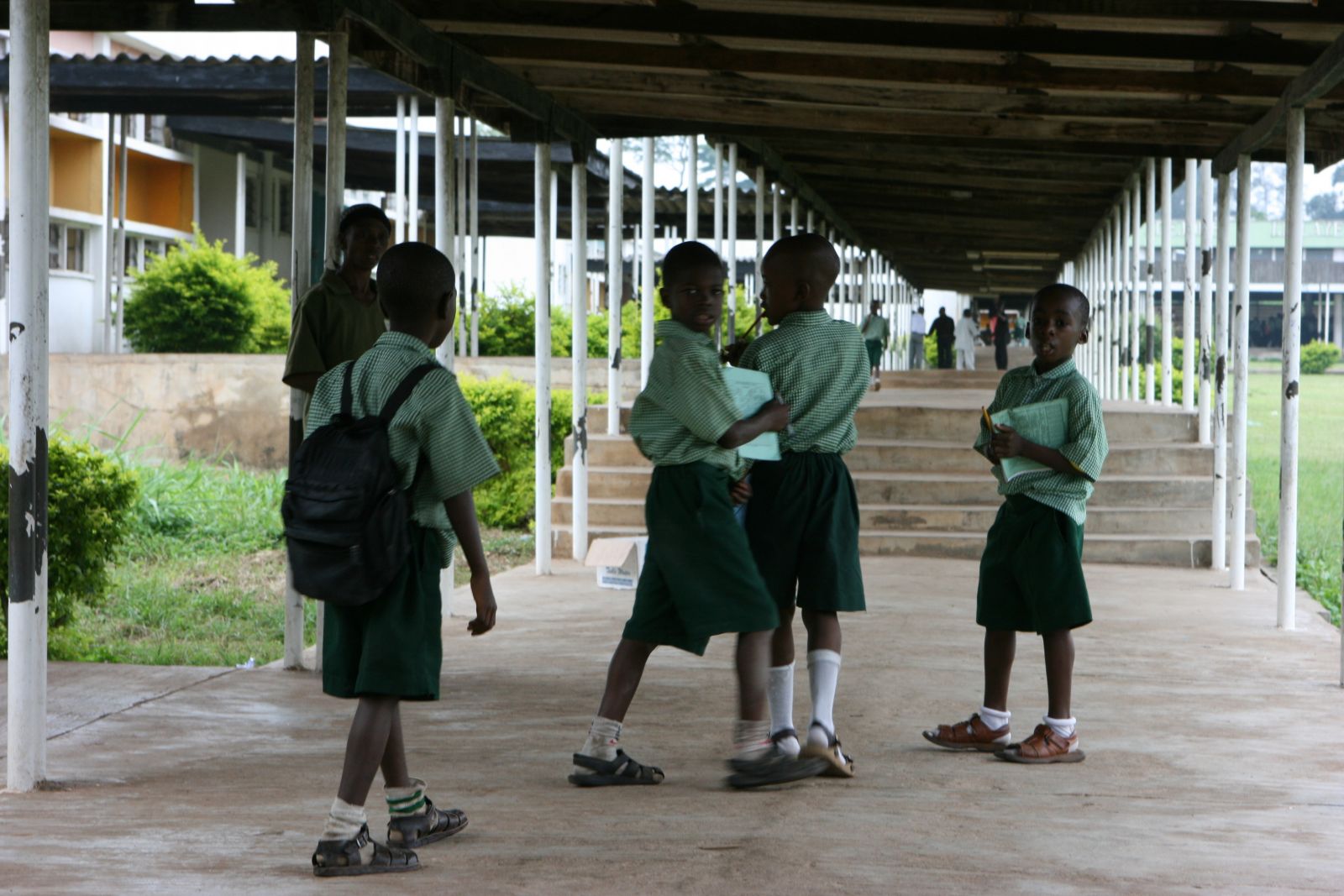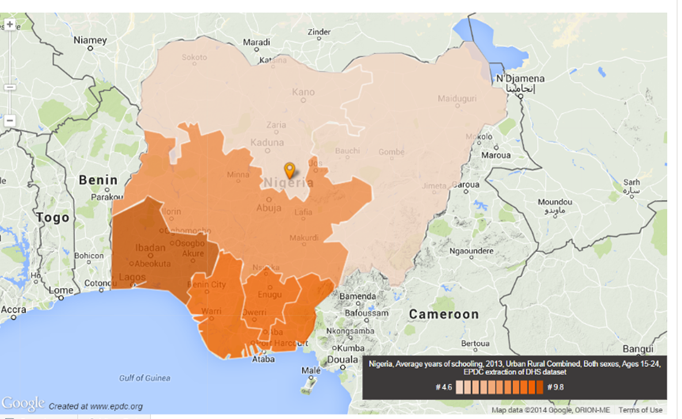You are here
EPDC Spotlight on Nigeria

This is the latest post in our Country Spotlight series, where we highlight a different country and the resources we offer, such as data, country profiles, research or other tools that users have available to them through the website. In this post our intern Maxine Wang highlights the data resources we have for Nigeria.
Nigeria is a sub-Saharan African country located in West Africa. With its population of 174 million, Nigeria is the most populous country in Africa and the seventh largest in the world. The largest two religions in Nigeria are Christians, living mostly in southern and central Nigeria, and Muslims, concentrated in the northern regions. Education in Nigeria is a 6-3-3 system. The official primary school entrance age is 6 and the primary school cycle lasts 6 years, followed by 3 years of lower secondary education and 3 years of upper secondary education. In principle, primary and lower secondary education are free and compulsory. Students sit for the Basic Education Certificate Examination (BECE)/Junior Secondary School Examination at the end of grade 9 and those completing upper secondary school sit for Senior Secondary Certificate Examination (SSCE), which requires them to demonstrate their mastery of multiple subjects including English and Mathematics. According to the Universal Basic Education Commission (UBEC), in 2012 there were 59,382 primary schools in the country, and 11,561 lower secondary schools.
Education Data: A snapshot
Nigeria’s government has put tremendous effort toward investing in human capital by pushing universal education, beginning in 1999. Through the Universal Basic Education Commission (UBEC), Nigeria aims to ensure every child has access to 9 years education, including 6 years of primary and 3 years of lower secondary school. With a low 54.8% literacy rate in 2003, and more than half of the female population unable to read or write, Nigeria has nevertheless shown progress in securing access as its primary gross enrollment rate was above 80% for both males and females in 2010. However, in spite of the political commitment to invest in basic education broadly and a significant increase in government funding, the most recent EPDC country education profile for Nigeria shows that education in Nigeria is still lagging in many respects, compared to other Sub-Saharan countries. For example, compared to other lower-middle income countries, Nigeria ranks at the 6th percentile in access and at the 14th percentile in learning as measured by literacy. Moreover, EPDC Projections for Nigeria estimate that the Primary Gross Enrollment Rate will not reach 100% until 2025, suggesting Nigeria has a long way to go to achieve the goal of universal access.
While showing steady growth in enrollment rates, Nigeria faces challenges of ensuring educational quality. From 1999 to 2007, the pupil teacher ratio in primary education increased to 46.1 from 41.4, which is much higher than the median pupil teacher ratio (29) in primary education for lower middle income countries. Additionally, oversized classes are common in Nigeria in both primary and secondary education. According to data from Global Monitoring Report 2010, the pupil classroom ratio was as high as 109 in primary school and 72 in secondary school (figure1). Such striking numbers were confirmed by UNICEF; “It is not rare to see cases of 100 pupils per teacher or students sitting under trees outside the school building because of the lack of classrooms.” Apparently, lacking of facilities for students stands in the way of improving education quality in Nigeria.
Figure 1 Pupil Classroom Ratio by Educational Level
Out of School Children and Child Labor
Nigeria has a rapidly growing economy but with an unequal income distribution, and disparity in education access might compound the social inequality. According to United Nations Development Programme (UNDP)’s Human Development Report, regional development in Nigeria as measured by the Human Development Index Value is lowest in the Northeast and highest in South-South, suggesting a development disparity between landlocked and coastal areas. Meanwhile, underdevelopment appears to be related to lower education levels. Figure 2 shows people from the least developed areas also suffer the lowest average years of schooling (4.6), which is only half of the number for people from coastal areas. To narrow the educational gap, more attention needs to be directed to the less developed areas, such as the Northeast and Northwest. Nigeria has the largest number of out of school children in the world, with over 8 million children ages 7-14 not in school. EPDC’s Out Of School Children Profile for Nigeria shows a noticeable difference of out of school rate from 6% in Southeast to 53 % in the Northeast.
Figure 2 Average Schooling Years by Subnational Area
Those children who are out of school might be forced to enter the labor market at an earlier age than their higher educated peers. The United States department of Labor estimates that about 31 percent of Nigeria’s children ages 5 to 14 are now in the work force. Realizing the fact that child labor undermines national development, Nigeria adopted international prohibitions on child labor into federal law in 2003. Nevertheless, because of different practices among states, child labor in Nigeria is still prevalent. Although the federal government made a commitment to eliminate child labor by signing the UN convention, only 24 out of 36 states in Nigeria are on the same track to put the law of child labor in to practice. In addition, law enforcement might prevent children from engaging in forced labor, but children living in poverty might end up transferring to the informal labor sector, such as domestic laborers or street vendors and still have no opportunity to acquire formal education. To achieve the goal of universal access to education, it is important to ensure children living in poverty have an incentive to enroll and progress through school, regardless of socio-economic background.
EPDC Resources
Among other data sources, unique EPDC data collections for Nigeria include administrative data from the Bureau of Statistics (2000 - 2002, 2006, 2008), Universal Basic Education Commission (2011), household survey data from DHS (2003, 2008, 2013), LSS (2003), MICS (2011), and indicators derived from UIS data. More survey findings regarding education in Nigeria can be found in DHS 2010 Nigeria Education Data Survey (NEDS), which was conducted in about 28,000 households with the aim of obtaining household information on children’s education. The survey includes household questionnaires, data survey, national and subnational areas summary.

.png)

Add new comment